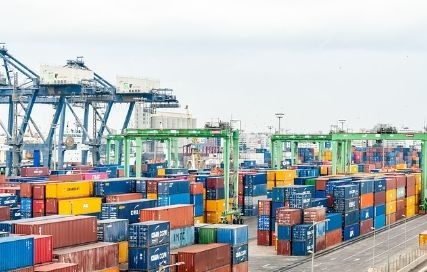What is a Transshipment Bill of Lading and How Does It Facilitate International Trade?
A Transshipment Bill of Lading (B/L) is a key document used in international logistics, especially in situations where cargo needs to be transported via multiple different shipping methods or routes before reaching its final destination. This document serves as a contract of carriage that covers the movement of goods across different carriers or modes of transportation from the origin to the final destination.

Understanding Transshipment Bill of Lading
Transshipment involves the shipment of goods or containers to an intermediate destination before being reloaded on another vessel or mode of transportation to continue to the final destination. A Transshipment Bill of Lading is used to document these changes in the carrier or the mode of transport during the journey of the shipment.
Key Features of a Transshipment Bill of Lading
• Multiple Carriers: The B/L details the transfer of cargo between different carriers when direct shipping from the origin to destination is not possible or practical.
• Legally Binding: Like other types of bills of lading, it is a legally binding document that serves as a receipt of goods, a contract of carriage, and a document of title.
• Routes and Modes: It specifies the various routes and modes of transport involved in the shipment, including any transshipment points where cargo is transferred between carriers.
Benefits of Using a Transshipment Bill of Lading
• Flexibility in Routing: Allows for the optimization of shipping routes and carriers, which can be crucial for managing costs, meeting delivery schedules, and handling logistical complexities in international trade.
• Enhanced Connectivity: Facilitates trade between countries that lack direct shipping links by allowing goods to be shipped through intermediate transshipment hubs.
• Streamlined Documentation: Provides a single document that covers the entire carriage, despite the involvement of multiple carriers, simplifying the paperwork and procedures for international shipments.
How a Transshipment Bill of Lading Works
1. Issuance: Issued by the first carrier, the B/L outlines the terms agreed upon for the shipment, including details of all carriers involved and the transshipment points.
2. Cargo Handling: At each transshipment point, the cargo is transferred from one carrier to another as specified in the B/L.
3. Responsibility Transfer: The responsibility for the cargo transfers along with the bill of lading at each point in the shipping route. Each carrier is responsible for the cargo while it is in their possession.
4. Final Delivery: The last carrier delivers the cargo to the final destination, using the B/L to confirm that the delivery terms have been met.
Considerations and Challenges
• Risk of Delays and Damage: Each transshipment point introduces potential risks for delays and damage. Proper handling and coordination are required to minimize these risks.
• Complex Coordination: Requires efficient coordination among various carriers and adherence to the schedules to ensure smooth transfer and compliance with shipping regulations.
• Documentation Accuracy: Ensuring the accuracy of the B/L is critical, as any errors can cause customs delays, disputes, and complications in claiming ownership.
Best Practices for Managing Transshipment B/L
• Careful Planning: Properly plan routes and select reliable carriers to reduce the risks associated with multiple handlings of the cargo.
• Insurance Coverage: Ensure adequate insurance coverage for the cargo, considering the multiple handling and transshipment points involved.
• Regular Tracking and Communication: Maintain regular communication with all carriers and track the shipment at each stage to address any issues promptly.
Conclusion
A Transshipment Bill of Lading is an essential tool for managing complex shipping routes that involve multiple carriers and modes of transportation. By providing a structured approach to handling and documenting the movement of goods through various transit points, it facilitates smoother international trade, especially for routes that cannot be covered by a single carrier or direct shipping line.
Related articles

 WeChat of CBiBank
WeChat of CBiBank